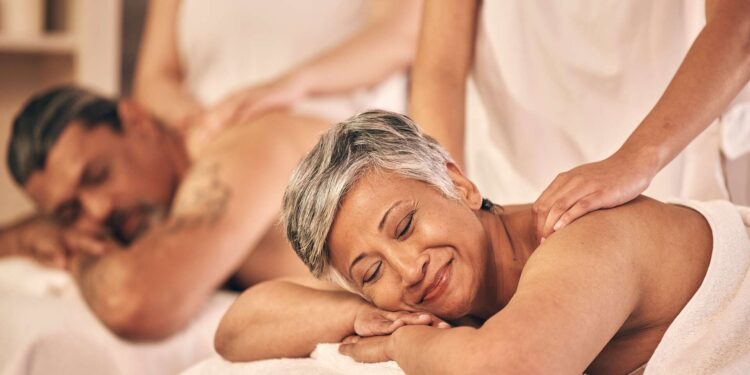Touch is the first way in which individuals connect to their material and social environment at birth. What if stimulating this sense could have beneficial effects, both on physical and mental health? This is what researchers have studied, focusing in particular on the factors influencing the therapeutic effectiveness of contact, thus demonstrating that well-being can be found in simple treatments accessible to all, whatever our age. !
In the past, science has already looked at the impact of touch on health, without finding significant factors likely to modulate the effectiveness of tactile interventions. However, these characteristics are essential for designing treatments. It is with this objective that a large study was carried out, based on qualitative data from the literature, and quantitative data from a meta-analysis carried out between 2021 and 2022 on 12,966 people. It measures the influence of the type of tactile dyad (human, robot, object), its familiarity, its direction (given or received), its frequency and its durationduration, and also considers the part of the body affected, with or without contact with the skin. The results are cross-referenced with demographic data such as age, gender, clinical condition, and were published in the journal Natural Human Behavior.
Long live the taste buds!
The results revealed multiple and varied effects on the health status of patients. They reveal a notable improvement in depressive and anxious states, fatigue and pain, but also in arterial pressurearterial pressure, joint mobility and stress states, by regulating cortisol levels. To a lesser extent, they also regulate heart rate, breathing and sleep quality. So many beneficial effects subject to the influence of certain factors studied: thus, tactile therapies using objects or robotsrobots were found to be comparable in terms of physicalphysical, but less beneficial in terms of mental health. The latter is, however, improved by skin-to-skin contact and unidirectional touch. For overall health, the podium is attributed to touch of the head, such as facial or scalp massages. Finally, regarding babies, they seem more receptive to maternal contact, particularly promoting weight gain.
This study is proof that touch therapies, including massage, improve mental and physical health, reducing anxiety in adults and stimulating development in newborns. However, it is essential to take into account the biases of the study, the importance of the frequency of exposure to these therapies, paradoxically confronted with the effects of habituation to touch on the nervous system and endocrineendocrine.



